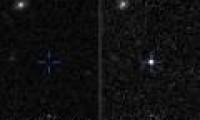
Astronomers are still unable to explain a mysterious bright area discovered by NASA's Hubble Space Telescope for the first time in 2006.

Observed from Earth, Cassiopeia A object, the remains of a star block exploded 330 million years ago, looking like a colorful ball.

Like ballet dancers dancing around an invisible leader, dozens of stars in the Milky Way are revolving around a supermassive black hole.
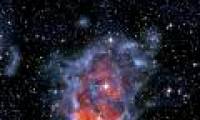
An image of the APEX telescope reveals how an ionized gas bubble causes surrounding materials to turn into dense blocks, thereby forming new stars.
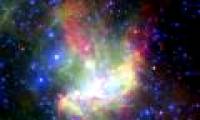
The terrestrial and space telescope combined to capture a picture provides a new perspective on the region's history with a great deal of NGC 346.

The terrible explosion of Eta Carinae seems to be completely dominated by a weaker form than a conventional supernova without destroying the star.

ESO's Wide Field Imager has just captured a confusing picture of spiral galaxy Messier 83 - the galaxy looks a lot like our Milky Way but smaller.

Astronomers have discovered a special star-making machine - a distant galaxy that is spewing out stars at amazing speeds, about 1,000 to 4,000 stars every year.

The second largest star in the constellation Orion - Betelgeuse will likely turn into a second sun before 2012, making many people think of the prophecy of

Crows in London Tower have their own caretakers, raw meat and blood-soaked biscuits, like coins and will bite people who want to touch them.
 Astronomers are still unable to explain a mysterious bright area discovered by NASA's Hubble Space Telescope for the first time in 2006.
Astronomers are still unable to explain a mysterious bright area discovered by NASA's Hubble Space Telescope for the first time in 2006. Observed from Earth, Cassiopeia A object, the remains of a star block exploded 330 million years ago, looking like a colorful ball.
Observed from Earth, Cassiopeia A object, the remains of a star block exploded 330 million years ago, looking like a colorful ball. Like ballet dancers dancing around an invisible leader, dozens of stars in the Milky Way are revolving around a supermassive black hole.
Like ballet dancers dancing around an invisible leader, dozens of stars in the Milky Way are revolving around a supermassive black hole. An image of the APEX telescope reveals how an ionized gas bubble causes surrounding materials to turn into dense blocks, thereby forming new stars.
An image of the APEX telescope reveals how an ionized gas bubble causes surrounding materials to turn into dense blocks, thereby forming new stars. The terrestrial and space telescope combined to capture a picture provides a new perspective on the region's history with a great deal of NGC 346.
The terrestrial and space telescope combined to capture a picture provides a new perspective on the region's history with a great deal of NGC 346. The terrible explosion of Eta Carinae seems to be completely dominated by a weaker form than a conventional supernova without destroying the star.
The terrible explosion of Eta Carinae seems to be completely dominated by a weaker form than a conventional supernova without destroying the star. ESO's Wide Field Imager has just captured a confusing picture of spiral galaxy Messier 83 - the galaxy looks a lot like our Milky Way but smaller.
ESO's Wide Field Imager has just captured a confusing picture of spiral galaxy Messier 83 - the galaxy looks a lot like our Milky Way but smaller. Astronomers have discovered a special star-making machine - a distant galaxy that is spewing out stars at amazing speeds, about 1,000 to 4,000 stars every year.
Astronomers have discovered a special star-making machine - a distant galaxy that is spewing out stars at amazing speeds, about 1,000 to 4,000 stars every year. The second largest star in the constellation Orion - Betelgeuse will likely turn into a second sun before 2012, making many people think of the prophecy of
The second largest star in the constellation Orion - Betelgeuse will likely turn into a second sun before 2012, making many people think of the prophecy of Crows in London Tower have their own caretakers, raw meat and blood-soaked biscuits, like coins and will bite people who want to touch them.
Crows in London Tower have their own caretakers, raw meat and blood-soaked biscuits, like coins and will bite people who want to touch them.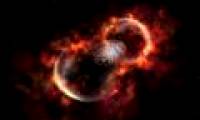



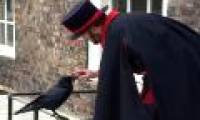
 Do signals from extraterrestrial civilizations detected by Sky Eye really exist?
Do signals from extraterrestrial civilizations detected by Sky Eye really exist? 'City without air conditioning' in China: People don't know what heat is!
'City without air conditioning' in China: People don't know what heat is! The element of the sun god is giving scientists a headache
The element of the sun god is giving scientists a headache Unique Village: Roofs Become Roads for Residents!
Unique Village: Roofs Become Roads for Residents! Top 7 strange psychological effects of the brain that we all have without knowing
Top 7 strange psychological effects of the brain that we all have without knowing Which is the most terrifying bedroom elixir in Chinese history?
Which is the most terrifying bedroom elixir in Chinese history? Earth's core may start rotating in reverse
Earth's core may start rotating in reverse A day in Japan can be up to 30 hours long, does this country live in a different 'timeline'?
A day in Japan can be up to 30 hours long, does this country live in a different 'timeline'?